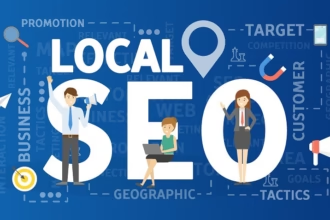In a world where big brands dominate search results, social media feeds, and customer attention, it might look impossible for small businesses to get noticed. But the truth is, you can compete with big brands online without needing a million-dollar budget.
It all comes down to strategy. With the right moves, small businesses can punch far above their weight in the digital world.
Let’s break down exactly how small businesses can compete with big brands online, win trust, grow consistently, and carve a loyal customer base.
1. Focus on One Niche, Not Everyone
Big brands market to the masses. That’s their game. Yours is different.
To compete with big brands online, start by narrowing down your audience. Instead of trying to serve “everyone,” target a very specific group of people. This is called niche marketing.
Example:
Instead of selling “skincare products,” focus on “organic skincare for women with sensitive skin over 40.” The more specific your niche, the easier it is to stand out and connect.
Why it works:
- Easier SEO wins
- Higher engagement rates
- Less competition
- Stronger customer loyalty
2. Use Your Size as a Strength
Customers today want a real human connection. They want to know who they’re buying from. And that’s your edge.
When you’re small, you’re more personal, more agile, more real.
Ways to use this:
- Add your face or name to your website
- Share behind-the-scenes content
- Reply to customer comments yourself
- Offer handwritten thank-you notes or personalised messages
3. Invest in Local SEO First
You don’t need to rank globally to win. Start by owning your local digital turf.
Local SEO means optimising your online presence so people in your city or area find you first. Google shows local results before national ones for most services.
To dominate local SEO:
- Claim and update your Google Business Profile
- Ask happy customers for Google reviews
- Add your city name to page titles and descriptions
- Create blog content around local events or problems
This is one of the fastest ways to compete with big brands online, especially if they don’t focus on your specific region.
Also Read: Why Every Small Business Owner in Nigeria Needs a Google Business Profile Today
4. Build a Brand, Not Just a Business
Big brands invest heavily in branding. You should too.
Branding isn’t just your logo. It’s your voice, values, vibe, and visuals.
Make sure your website, Instagram, and email content all feel like they come from the same brand personality. Use consistent fonts, colours, tone, and language.
Ask yourself:
- What do we stand for?
- Why do customers trust us?
- What makes us different?
Having a clear brand story helps you compete with big brands online by creating emotional loyalty, which is something money can’t buy.
5. Content is Your Weapon
Big brands publish content. You should too, but smarter, not harder.
Create educational and emotional content that directly helps your audience solve problems or feel understood.
Examples:
- Blog posts answering common questions
- Instagram Reels showing behind-the-scenes processes
- TikToks that entertain your target market
- How-to guides, checklists, or eBooks
Each piece of content is a door that leads new people to your business. The more doors, the more traffic.
To truly compete with big brands online, show up consistently in places your customers spend time, and give them value without always selling.
Also Read:
6. Email Marketing is Your Secret Weapon
Most small businesses ignore email. That’s a mistake.
Email marketing lets you talk to your customers directly. No algorithms, no paid ads.
Here’s what works best:
- Weekly tips related to your niche
- Personal stories from your founder or customers
- Exclusive offers only for subscribers
- Abandoned cart reminders
Keep it human. Keep it helpful. People read emails from real people. Use that to your advantage to compete with big brands online without burning cash.
7. Collaborate with Other Small Businesses
You’re not alone. Team up with others in your industry or location. Together, small businesses can create a network strong enough to compete with big brands online.
Cross-promotion means sharing each other’s products or content to tap into a new audience.
Examples:
- Guest blog posts
- Instagram Lives or takeovers
- Bundle offers
- Local events or online webinars
8. Focus on Micro-Influencers
Big brands throw money at celebrity influencers. You don’t need to.
Instead, look for micro-influencers with 1k–10k followers in your niche. They usually have better engagement, and they’re more affordable, sometimes even free in exchange for a product.
This is a fast way to boost trust and traffic.
Bonus Tip: Always check engagement rate. 1,000 engaged followers > 100,000 fake ones.
9. Run Low-Budget, High-Precision Ads
You don’t need to spend $10,000 a month to advertise online. A $5 – $10 daily budget, when used smartly, can give you solid results.
Focus your ads on:
- Retargeting people who visited your site
- Promoting one best-selling product
- Collecting emails with a free offer (like a guide or discount)
Small wins add up. With time, you’ll scale. That’s how you slowly but surely compete with big brands online on your terms.
10. Track and Adjust Everything
Big companies have data teams. You’ve got Google Analytics and common sense.
Measure what works and double down. If people love one blog post, write more on that topic. If a certain Instagram format works, repeat it.
Simple tools to use:
- Google Analytics (for traffic insights)
- Hotjar (for user behaviour)
- Mailchimp or ConvertKit (for email stats)
- Meta Business Suite (for Facebook/IG performance)
Don’t Miss: How to Build a Memorable Brand Identity: Stand Out 100% and Connect with Your Audience
Conclusion
You don’t have to be big to win online. You just need to be smart, consistent, and authentic.
The digital world is now full of tools and tactics that level the playing field. With content, email, niche branding, or SEO, you can absolutely compete with big brands online, build trust, and grow steadily.
So don’t copy what the giants do. Do what they can’t: be real, be small, and be everywhere your customer needs you to be.





